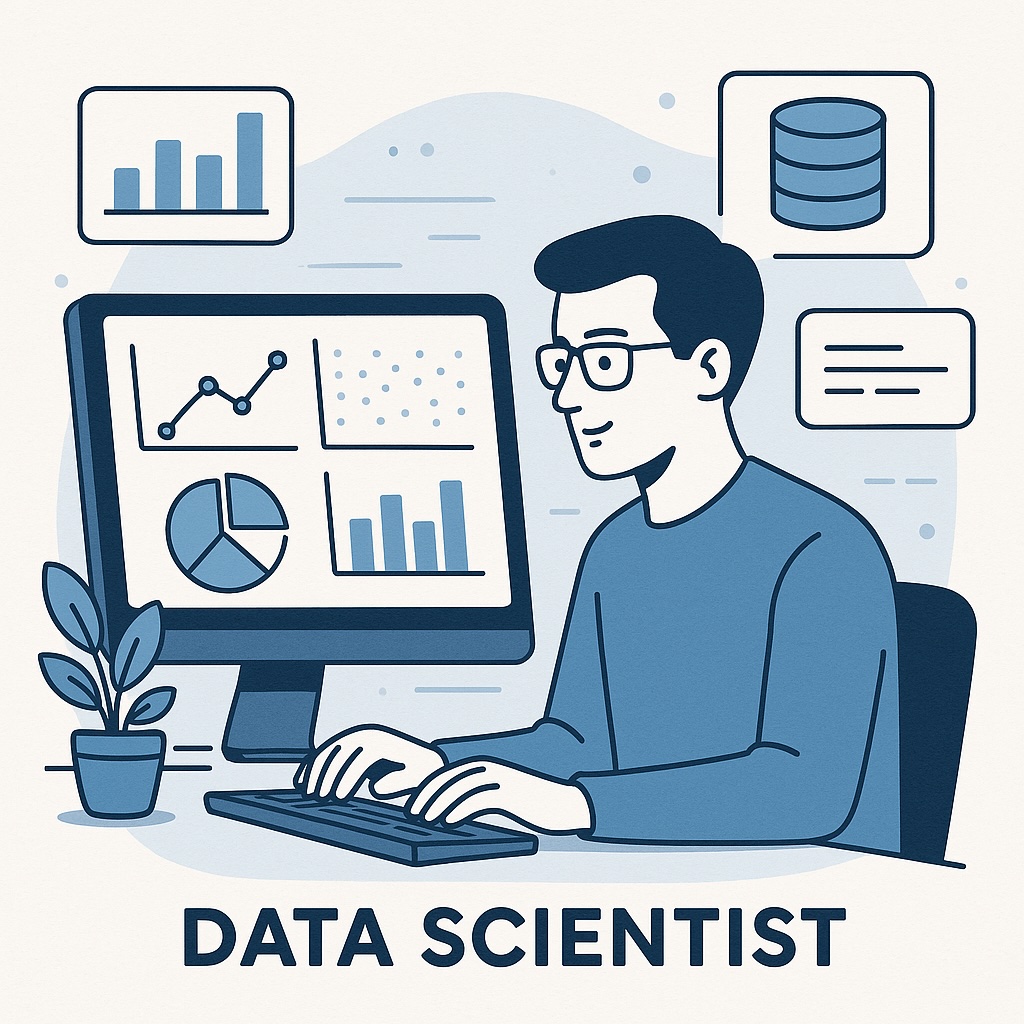What does a Data Scientist do
A data scientist plays a crucial role in transforming data into valuable insights that help businesses make better decisions. The work of a data scientist is versatile and goes beyond just analyzing large datasets. In this role, advanced techniques such as machine learning, artificial intelligence (AI), statistical models, and data analysis methods are used to gain insights that can be applied in real-time.
What does a data scientist do?
A data scientist is not only involved in collecting and processing data but also in developing advanced algorithms and predictive models. The goal is to enable valuable, data-driven decisions. This could include improving business processes, optimizing customer relationships, or making strategic choices based on data analysis.
Practical applications
Data scientists find their applications in various sectors, from healthcare and retail to financial services and the technology sector. A good example of how data science is applied is in the financial sector, where banks use advanced algorithms to detect potential fraud.
Example: Detecting fraud in real-time
Banks use self-learning models that continuously analyze new data. These models are trained on historical transaction data and learn to recognize patterns that may indicate fraudulent activities. Thanks to this continuous analysis, a bank can "flag" suspicious behavior in real-time, allowing fraud to be detected and prevented more quickly. This technology is an example of how data science enables proactive and real-time responses to potential risks.
Key skills for a data scientist
The work of a data scientist requires a wide range of skills, including:
- Machine learning: Developing algorithms that can learn from data and make predictions without explicit programming.
- Statistical analysis: Applying statistical methods to identify patterns in data and draw conclusions.
- Programming experience: Proficiency in programming languages such as Python, R, SQL, and sometimes also in working with large data infrastructures (like Hadoop or Spark).
- Data analysis methods: The ability to transform and prepare data, then analyze it to derive valuable insights.
- Knowledge of domain-specific trends: Insight into the specific industry in which the data scientist works is essential to develop relevant and useful models.
The role of data science in the future
Data science is expected to play an increasingly important role in the future. With the rise of new technologies and the growing amount of available data, the role of the data scientist is becoming more crucial. The possibilities are endless, from improving healthcare through predictive analytics to optimizing supply chains in businesses.
Moreover, the techniques used by data scientists will become more advanced. Think of the use of deep learning, natural language processing (NLP), and other emerging technologies, which will significantly enhance the ability of data scientists to perform deeper, more complex analyses.
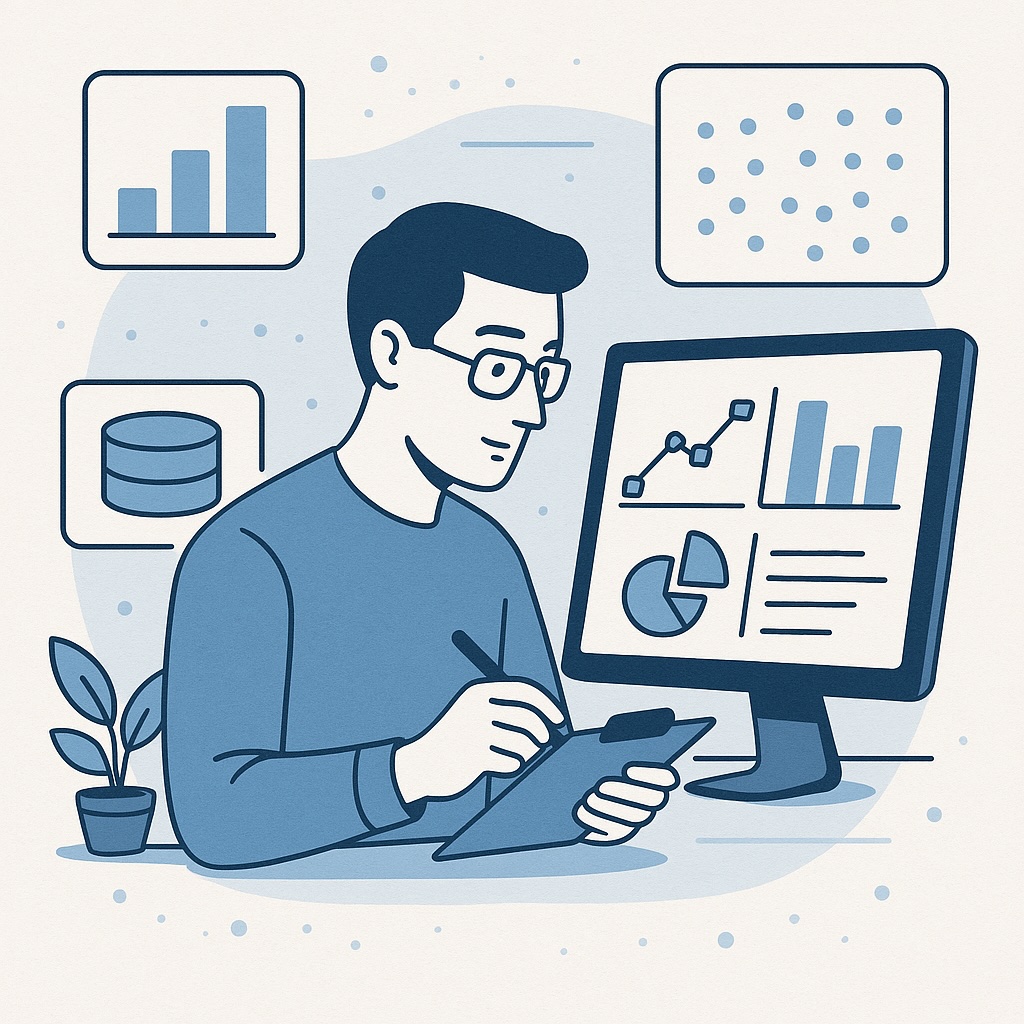
Job Profile of a Data Scientist
A Typical Job Profile of a Data Scientist
A data scientist possesses a wide range of skills and knowledge, with a focus on mathematical and technical disciplines. Below are the key characteristics and requirements for this job profile:
Academic Education and Work Experience
- Someone with an academic education in (mathematical) statistics, econometrics, AI, computer science, or an equivalent technical discipline, often followed by a scientific doctorate and/or several years of relevant work experience in one of these areas.
Skills in Programming Languages
- Strong in Python, R, and other important data science languages like Julia, with experience in frameworks such as TensorFlow or PyTorch.
Knowledge of Self-Learning Algorithms
- In-depth knowledge of self-learning algorithms at a mathematical level, with the capacity to develop new methods or adjust existing models based on the specific research question and/or available data.
SQL and Data Optimization
- Skilled in writing SQL queries and experienced in optimizing queries for large datasets and complex data model structures.
Cloud Platforms and Machine Learning
- Knowledge of cloud platforms for data storage and processing such as Microsoft Azure, AWS, and Google Cloud, including experience with cloud-based machine learning models and data pipelines.
Experience with ETL Software
- Experience with on-premise and cloud-based ETL software such as Apache Spark and Apache Kafka, and familiarity with the latest developments in stream processing and real-time data analysis.
Communication and Collaboration
- In-depth knowledge of ETL processes and the ability to communicate effectively with data engineers and other stakeholders regarding the implementation of AI models and statistical algorithms within end-to-end data workflows.
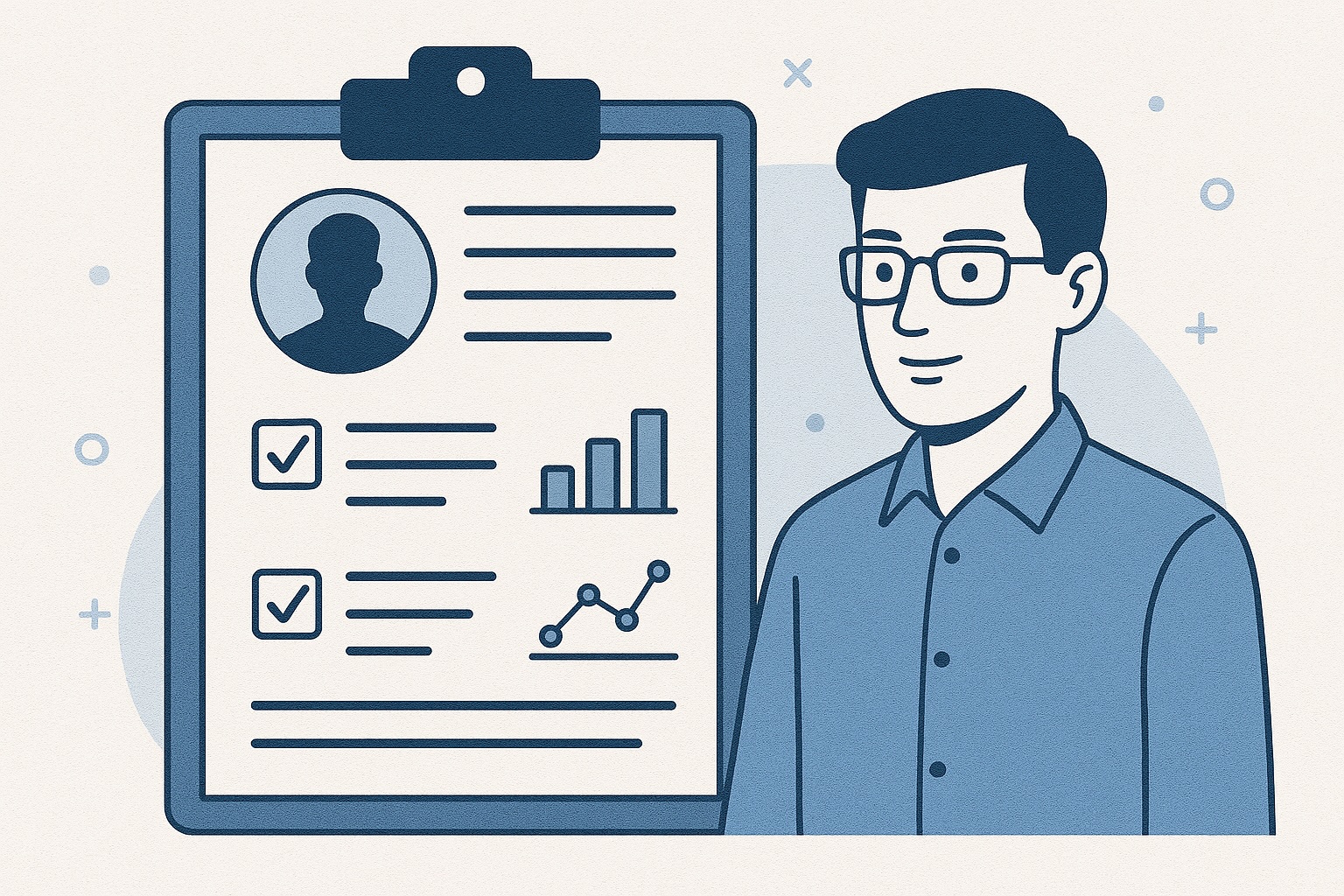
Difference Between Data Scientist and Data Analyst
A data scientist often possesses the same skills as a data analyst, but goes beyond this role. A data analyst is proficient in statistics and, depending on the job, may also apply self-learning models. A data scientist, in addition, has in-depth mathematical knowledge of statistics, AI, and self-learning algorithms. This expertise enables them to solve more complex problems and deliver customized solutions. This goes far beyond the operational application of, for example, regression models. Furthermore, data scientists are often expected to think strategically about data engineering, such as building and optimizing data pipelines. This ensures that the collected data meets the specific requirements of the data scientist, improving the quality and applicability of analyses.
Gray Area Between Data Scientist and Data Analyst
There is some overlap between the roles of data scientist and data analyst, which can lead to confusion. Sometimes, someone working with more advanced statistics, such as self-learning algorithms, is already called a data scientist. On the other hand, someone focused on fundamental modeling may, in some cases, be labeled a data analyst. Depending on the organization, the focus of the role may even lean more toward the software development side. Therefore, it is essential for job seekers to carefully study the job description, while employers must weigh when a role should be called a data scientist or data analyst. A clear job description is important to avoid misunderstandings.
Transition from Data Analyst to Data Scientist
Regarding the transition between these two roles: it is possible for a data analyst to grow into the role of data scientist, but it generally requires additional mathematical and technical knowledge. A strong foundation in statistics and experience with data manipulation are certainly useful, but transitioning to data science often requires delving into complex AI technologies, machine learning, and self-learning algorithms.
Transition from Data Scientist to Data Analyst
For a data scientist to transition to a data analyst role, the shift is often easier because they already possess the necessary analytical skills. However, they may need to shift their focus from developing advanced models to more operational and reporting-oriented tasks.

Which tools does a data scientist use
Python
Python remains the most popular programming language in data science. Thanks to its simplicity, flexibility, and a rich set of libraries like pandas, NumPy, Matplotlib, Seaborn, Scikit-learn, and TensorFlow, Python is still the standard for data analysis, visualization, machine learning, and deep learning. It is increasingly used in combination with AI and automation frameworks such as PyTorch and Hugging Face.
R
R remains an excellent choice for statistical analysis, data visualization, and academic research. It is often used for advanced data analysis and has powerful packages like ggplot2, dplyr, Shiny, and more recent additions such as tidyverse for more efficient data handling. R is increasingly combined with Python to leverage the strengths of both languages in research and production environments.
SQL
SQL (Structured Query Language) remains essential for managing and analyzing relational databases. Modern extensions such as window functions, Common Table Expressions (CTEs), and integration with cloud-based platforms like Google BigQuery and Amazon Redshift make SQL even more powerful for both complex queries and analytical applications.
Jupyter Notebook
Jupyter Notebooks remain the go-to tool for data scientists who want to combine interactive code, visualizations, and documentation. Jupyter has further evolved with integration of more programming languages and cloud-based solutions like Google Colab, facilitating collaboration and access for teams worldwide.
Tableau
Tableau remains a leading BI tool for interactive data visualization and dashboarding. It has expanded its functionality with AI-driven insights and automation of reporting, increasing its ease of use. It is often employed for data analysis at the management level and strategic decision-making.
Power BI
Power BI, Microsoft's popular business intelligence tool, remains a leading tool for creating dynamic dashboards and reports. With its strong integration with other Microsoft products like Excel, Azure, and SQL Server, as well as enhanced capabilities for AI-driven analytics, Power BI continues to be widely used across various industries.
Looker
Looker, now part of Google Cloud, provides a data model layer (LookML) that promotes consistency and scalability in data-driven organizations. It is increasingly used for embedded analytics and product-oriented data analysis, where users gain in-depth insights through interactive dashboards and automated reporting.
dbt (Data Build Tool)
dbt remains the tool for data teams to manage data transformation logic within cloud data warehouses like Snowflake and BigQuery. With ongoing improvements in version control, automated testing, and documentation, dbt helps create scalable, reliable data models for modern data architectures.
Apache Airflow
Apache Airflow remains the popular platform for workflow management and orchestration of data pipelines. It is widely used for managing ETL processes, automating complex workflows, and scaling data products within cloud-based environments like AWS and GCP.
Hadoop
While Hadoop is less frequently used as a standalone tool, it remains essential for batch processing and distributed storage of big data via HDFS. It is often combined with tools like Apache Hive, Apache HBase, and Spark for complex data analysis and real-time processing.
Apache Spark
Apache Spark is a powerful open-source engine for large-scale data analysis and real-time processing. With the expansion of Spark Streaming, MLlib for machine learning, and integrations with Kafka and Kubernetes, Spark is becoming increasingly versatile in the world of big data and AI-driven applications.
TensorFlow
TensorFlow remains a leading library for deep learning, developed by Google. It is widely used for advanced applications such as speech recognition, image classification, and generative AI. The Keras API and the new TensorFlow.js allow developers to quickly build neural networks and deploy AI models in various environments.
Kubernetes
Kubernetes is now the standard platform for container orchestration. It makes it easy to deploy, scale, and manage containerized applications. In the context of data science, Kubernetes is widely used for deploying models, data pipelines, and APIs within a microservices architecture in production environments.
GitHub
GitHub remains the de facto standard for version control and collaboration in the data and tech world. It allows data scientists to collaborate effectively, review code, and document projects. The integration of GitHub Actions for CI/CD workflows and GitHub Copilot for AI assistance accelerates the development cycle.
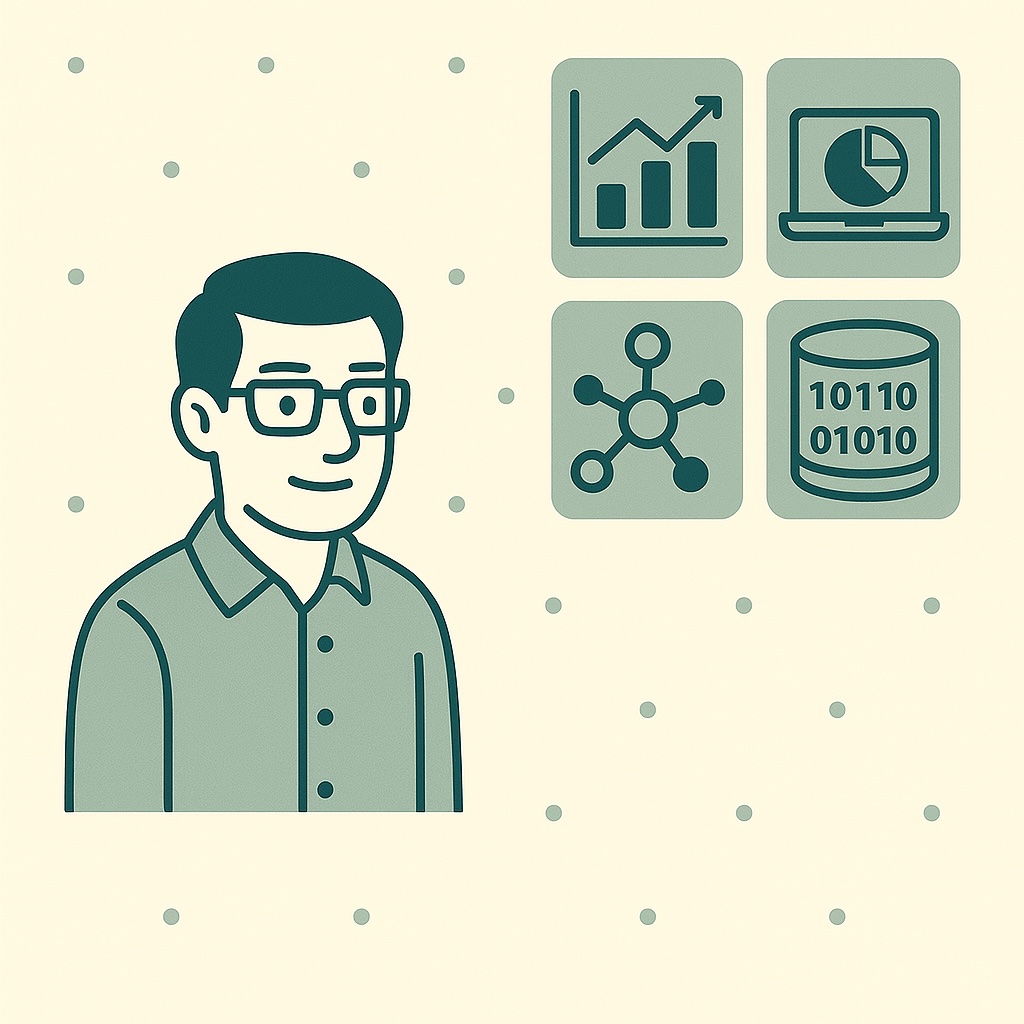
A Day in the Life of a Data Scientist
The Workday of a Data Scientist
A typical workday for a Data Scientist is dynamic and filled with various responsibilities. The role of the Data Scientist requires both technical expertise and creative thinking, combined with the skills to communicate complex information clearly to different stakeholders. Here’s a glimpse of what such a day may look like:
08:30 – Morning Check and Setting Priorities
The day often begins with a quick check of ongoing data analyses and predictive models. The Data Scientist checks whether the existing models are functioning well and if the latest updates have been correctly implemented. Errors, deviations, or unexpected results are immediately identified and reported to the team. Then, they prioritize the necessary adjustments or optimizations to improve efficiency and enhance model performance.
09:00 – Meetings and Collaboration
Collaboration with other specialists, such as data engineers and business analysts, is an important part of the workday. Data Scientists have frequent meetings with colleagues to ensure that analyses align well with business goals and the available infrastructure. In these meetings, technical issues are discussed, and new insights are shared to further improve the quality of data and models.
10:30 – Modeling and Data Processing
After the meetings are finished, the Data Scientist dives into the core of their work: developing, improving, and testing predictive models. This can range from machine learning algorithms to statistical analyses that provide valuable insights for the company. This process goes hand in hand with cleaning and integrating data from various internal and external sources. Data quality and reliability are crucial for the success of a model, so editing datasets is a time-consuming but necessary task.
12:00 – Lunch Break and Informal Discussions
During lunch, informal discussions often take place with colleagues, where the conversation not only focuses on work but also on technological developments, new trends in the industry, and innovative solutions. These informal moments contribute to team cohesion and are a valuable opportunity for knowledge exchange.
13:00 – Presentation of Insights
In the afternoon, the insights gained during the morning are presented to stakeholders, such as project managers, team leaders, or even external clients. This is a crucial moment for the Data Scientist to communicate the complexity of the analyses in an understandable way. Visualizations, graphs, and other data visualization techniques are often used to clearly convey the key findings. The ability to translate data into valuable business insights is essential for the success of the organization.
15:00 – Iteration and Validation
After the presentations, any feedback and questions are processed, and the validation and iteration process begins. The Data Scientist tests and refines models and algorithms based on the feedback received, adjusts parameters, and runs new tests to improve accuracy. The iteration process ensures that the models continue to perform better and are aligned with the changing needs of the business.
16:30 – Future Projects and Documentation
The day often ends with planning future analyses and projects. New initiatives are discussed and prepared, and it is determined which data sources will be needed for future models. At the same time, updating documentation is an important part of the workday. This ensures transparency in the work and helps to capture knowledge for future analyses.
The role of the Data Scientist is constantly evolving and requires a balance between technical skills, creative problem-solving ability, and effective communication. The day is filled with various activities that come together to deliver valuable insights for the organization, with the Data Scientist contributing to data-driven decision-making and innovation.
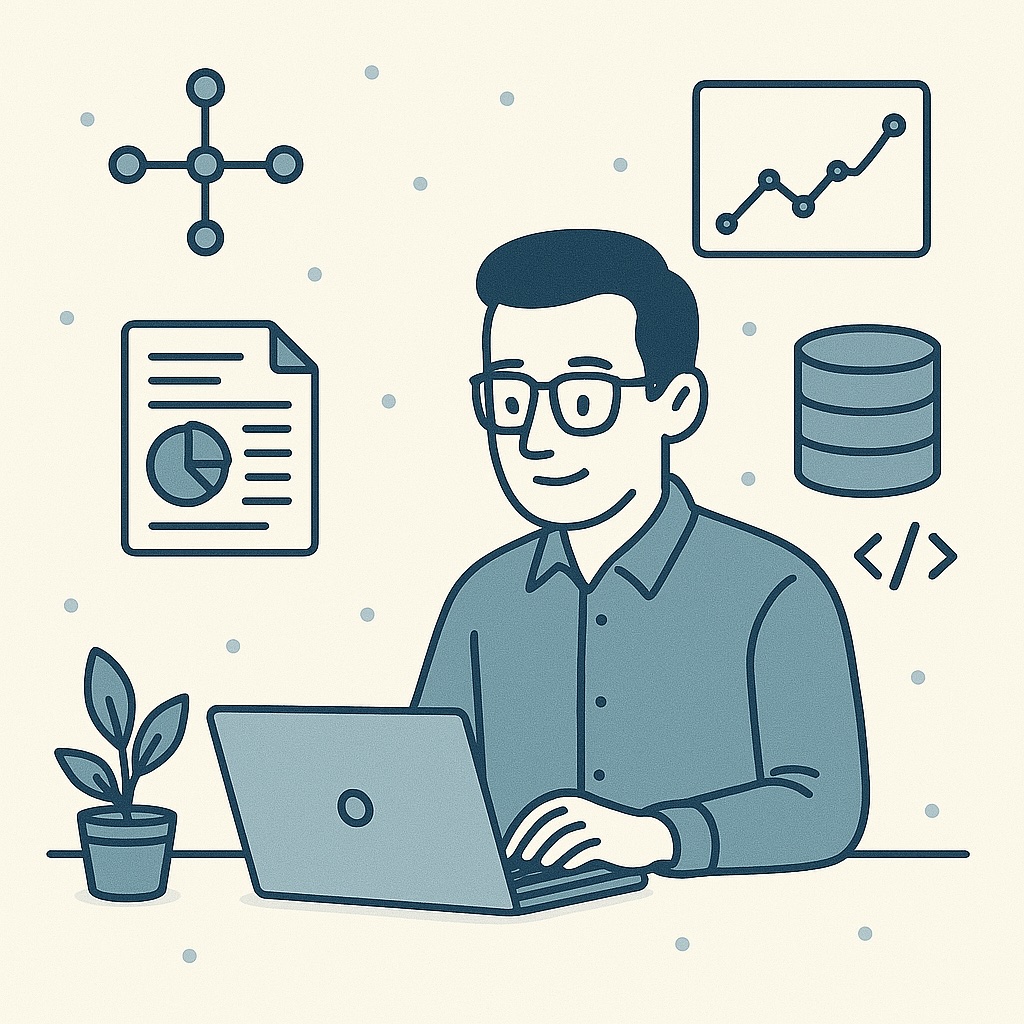
What does a Data Scientist earn
The salary of a Data Scientist can vary significantly depending on factors such as experience, location, specific industry, and company size. Data Scientists work in a wide range of industries, from technology and finance to healthcare and retail, which impacts salary expectations. Below is an overview of the different experience levels and their corresponding salaries.
Entry-level (Junior Data Scientist)
A Junior Data Scientist, with little to no work experience in data science, can expect to earn between €3,000 and €4,500 per month. This salary is typical for someone who has just graduated or is making a career switch into data science. Junior Data Scientists often work under the guidance of more experienced colleagues and are responsible for basic data analysis tasks, such as cleaning data and performing simple analyses.
Mid-level (Data Scientist)
A Data Scientist with a few years of work experience (approximately 2 to 5 years), who has further developed skills in data analysis, machine learning, and modeling, can earn between €4,500 and €6,000 per month. At this level, Data Scientists are often able to independently conduct complex analyses, develop machine learning models, and present results to stakeholders. They play a larger role in the strategic decision-making process within the company.
Senior level (Senior Data Scientist)
A Senior Data Scientist, with more than 5 years of experience, can expect a salary between €6,000 and €8,000 per month. Senior Data Scientists have deep expertise in their field and often take the lead on projects, mentor junior team members, and help the organization implement advanced data science solutions. They have extensive experience building complex machine learning models, working with big data, and developing new data analysis methods.
Lead/Principal Data Scientist
The role of Lead or Principal Data Scientist is a leadership position that often comes with responsibilities such as setting strategic direction, leading teams, and developing innovative solutions to advanced analytical challenges. The salary for this position can range from €8,000 to €10,000 per month, depending on the size of the company and the industry. Lead Data Scientists are experts in their field and contribute to the overall business strategy with their deep knowledge and experience.
Location and Industry
Location plays a key role in the salary of a Data Scientist. In major cities such as Amsterdam, Rotterdam, or Eindhoven, salaries may be higher due to the concentration of tech companies and start-ups. The industry in which a Data Scientist works also influences salary. In industries such as technology, finance, and pharmaceutical research, salaries are often higher than in more traditional industries. Additionally, companies that work with large amounts of data or advanced technologies, such as artificial intelligence and machine learning, may offer higher salaries.
Education and Skills
The education of a Data Scientist plays an important role in determining salary. Data Scientists with a master's degree or PhD in a field such as computer science, mathematics, statistics, or a related field, can often expect higher salaries than those with only a bachelor's degree. Additionally, skills such as experience with big data, machine learning, deep learning, and knowledge of programming languages like Python, R, and SQL can further increase salary.

Career Path and Advancement Opportunities for Data Scientists
Entry Level (Junior Data Scientist / Data Analyst)
At this level, you work on basic projects and perform routine tasks under the guidance of more experienced team members. Your responsibilities may include collecting, cleaning, and processing data, performing basic analyses, and supporting the reporting process. You may also create simple predictive models and learn to work with popular data analysis tools and techniques such as Excel, SQL, Python, or R. This is an important phase where you further develop your technical skills and become familiar with the fundamentals of data analysis.
Mid-Level (Data Scientist)
After a few years of experience, you take on more advanced projects. You develop your own hypotheses, apply statistical analysis methods, and use machine learning algorithms to solve more complex problems. You collect, analyze, and interpret data to gain valuable insights, which you effectively present to both technical and non-technical stakeholders. You become increasingly independent in your work, and you are capable of developing advanced models and tools to support the organization's data needs. Additionally, you may play a role in coaching and mentoring junior team members, which helps you develop your leadership skills.
Senior Level (Senior Data Scientist / Lead Data Scientist)
At this level, you have extensive experience and expertise in data science. You take the lead in designing and implementing complex data science projects, ensuring they contribute to the strategic goals of the organization. You develop new data-driven products, optimize processes, and make use of advanced techniques such as deep learning and natural language processing (NLP). You work closely with other departments, such as engineering, marketing, and product development, to support strategic decision-making and create data-driven solutions. As a mentor to junior team members, you share your knowledge and experience, contributing to the technical and strategic direction of the organization. You also take responsibility for improving the data culture within your team and the broader organization.
Management (Data Science Manager / Director of Data Science)
In addition to technical expertise, strong leadership and management skills are essential at this level. You oversee a team of data scientists and are responsible for determining the strategic direction of data science initiatives within the organization. You ensure that your team's work meets the highest quality standards and contributes to broader business goals. Guiding the development of your team members, managing resources, and tracking the progress of projects are key parts of your role. You play a crucial role in communicating the value of data science to senior management and other departments, ensuring your team is well-positioned to contribute to the organization's strategic vision.
Executive Level (Chief Data Officer / Chief Analytics Officer)
At the highest level of an organization, you are responsible for the overall data strategy, including ensuring data quality, promoting data-driven decision-making, and leading the data and analytics teams. You play a critical role in setting the long-term vision for data and analytics within the organization and work closely with other senior managers to integrate data insights into strategic business decisions. You are responsible for developing a data-driven culture in the organization, where data is seen as a strategic asset. You oversee the implementation of data initiatives at all levels and ensure that data infrastructure, tools, and processes meet the company's needs. Additionally, you play an important role in representing the organization in external networks, such as with investors or clients, by sharing the success of the data strategy and outcomes.

Networking and Industry Organizations for Data Scientists
There are numerous networks and industry organizations that provide valuable resources and communities for data scientists. Here is an overview of some of the most prominent ones:
International Data Science Foundation (IDSF)
IDSF is a global network focused on advancing the data science industry through education, training, events, and providing resources for data scientists. They also have initiatives for certifying data science professionals and improving ethical standards in the field.
Data Science Association (DSA)
DSA is a non-profit organization representing data scientists worldwide. They offer access to a wide range of professional resources, including a code of ethics for data scientists, as well as certification programs and networking opportunities.
Association for Computing Machinery's Special Interest Group on Knowledge Discovery and Data Mining (ACM SIGKDD)
ACM SIGKDD is an influential professional community focused on advancing knowledge discovery, data mining, and artificial intelligence. They organize annual conferences, workshops, and publish leading journals on the latest developments in these areas.
Institute for Operations Research and the Management Sciences (INFORMS)
INFORMS is an international association for professionals in operations research, management science, and analytics. They provide access to an extensive network of academics and professionals involved in data analysis and decision-making processes.
American Statistical Association (ASA)
Although ASA is not exclusively focused on data science, the organization provides a wealth of information, training, and networking opportunities for professionals in statistics, including data scientists working with statistical models.
LinkedIn Groups
There are various LinkedIn groups specifically focused on data science, ranging from general discussion groups to specialized groups focusing on specific tools, techniques, and industries. These groups provide an excellent way to stay updated on the latest trends and best practices.
Meetup Groups
Meetup.com offers a wide range of local networking groups for data scientists, ranging from informal meetups to more structured events, workshops, and hackathons. This offers a great opportunity to network and learn new skills.
KDnuggets
KDnuggets is a leading source for news, tools, courses, and trends in data science, analytics, and machine learning. The site features an active community of professionals who participate in discussions, share knowledge, and solve challenges in the data science world.
Reddit offers several subreddits, such as r/datascience, which are valuable spaces for data scientists to ask questions, seek advice, and stay up to date with the latest developments, trends, and discussions in the field.
Towards Data Science
Towards Data Science is a platform where data scientists share articles about their experiences, techniques, and the latest developments. It provides practical insights and valuable resources for professionals who want to expand their knowledge.
Kaggle
Kaggle is primarily known as a platform for data science competitions, but it also has a vibrant community where data scientists collaborate, share their work, and exchange knowledge. Kaggle also provides datasets, code examples, and educational resources that are essential for both beginners and advanced practitioners.

Impact and societal relevance
The Power of Data Scientists in the Data-Driven World
A Data Scientist plays a crucial role in shaping our increasingly data-driven society. Thanks to their expertise in analyzing vast amounts of both structured and unstructured data, they can generate valuable insights that help organizations make informed and strategic decisions. Whether it's improving business processes, optimizing supply chains, or personalizing customer services, the impact of their work is far-reaching. Data Scientists develop complex models and algorithms that enable companies to predict trends and better understand future needs, resulting in greater efficiency and customer satisfaction.
The Societal Relevance of Data Scientists
The societal impact of a Data Scientist is immense and undeniable. They play a key role in solving contemporary societal challenges. In healthcare, for example, Data Scientists contribute to predicting disease outbreaks, improving treatment methods, and optimizing medical care processes. This not only leads to better care for patients but also to more efficient use of resources and cost reduction in the healthcare sector.
In urban planning, Data Scientists can use mobility data to optimize public transport, reduce traffic congestion, and make cities smarter and more sustainable. They provide valuable input for improving accessibility, reducing traffic jams, and promoting sustainable transportation options. In the fight against climate change, they offer powerful tools by analyzing ecological data and predicting future climate changes, which is crucial for developing long-term solutions to protect our planet.
The Data Scientist as a Bridge Between Technology and Societal Impact
The ability of Data Scientists to transform complex data into practical and meaningful insights provides solutions to numerous societal and business challenges. Their work connects technology and mathematics with societal needs, enabling them to drive innovation in ways that were previously unimaginable. From improving the quality of life through more efficient healthcare to promoting more sustainable urban development and environmental management, the impact of their work is profound.
Data Scientists function as bridge builders who span the gap between technology and the needs of society. By applying advanced data analysis methods, they contribute to finding solutions that not only improve efficiency but also contribute to a more sustainable and just future for all.

Case Study: The Role of the Data Scientist
Background
HealthCo is a leading company in healthcare focused on improving patient care through innovative technologies and data-driven solutions. The company had access to vast amounts of data from various sources: patient records, treatment and research results, operational data, and even real-time data from medical devices. Despite the rich flow of information, HealthCo was aware that the data remained underutilized, as insufficient in-depth analysis was conducted to realize the full value of the data.
The Challenge
The collected data was both extensive and complex, consisting of structured information in databases and unstructured text, such as medical notes and reports. This unstructured data, which often contained crucial insights, was difficult to access and not easily integrated with other data streams. Furthermore, there was a growing need for advanced predictive models that could assist doctors in making quicker and better-informed decisions, without compromising patient care privacy and ethical guidelines.
The Approach: The Data Scientist as a Catalyst
Liam, an experienced Data Scientist, was hired to tackle the challenge. His first step was to gain an in-depth understanding of the available data and HealthCo’s specific business needs. He worked closely with doctors, data engineers, and ethical committees to ensure that all analyses were carried out within the boundaries of applicable regulations, such as the GDPR (General Data Protection Regulation), and ethical considerations.
Liam proposed creating an integrated data infrastructure that would make both structured and unstructured data accessible and usable. To achieve this, he leveraged advanced Natural Language Processing (NLP) techniques to convert medical notes into structured data. Additionally, he developed a data lake where all data streams were consolidated, allowing for effective analysis and integration with machine learning models.
Implementation of Advanced Models
After setting up the infrastructure, Liam began implementing advanced machine learning models. One of the first successful applications was developing predictive models for identifying patients at high risk of chronic diseases, such as diabetes or cardiovascular diseases. The models were trained with historical patient data, treatment history, genetic information, and lifestyle data to calculate accurate risk scores.
Liam also developed models to improve the efficiency of healthcare processes. By analyzing data from hospital logistics and patient flows, he was able to create predictive algorithms that enabled doctors and healthcare providers to optimize scheduling and resource allocation. This led to shorter waiting times, better utilization of medical equipment, and overall improved patient satisfaction.
Results: A Revolution in Care and Efficiency
The implementation of Liam’s models resulted in impressive improvements in both care quality and operational efficiency. By using predictive models, doctors could proactively identify patients at risk of severe complications. This allowed them to intervene earlier, leading to fewer hospital admissions and lower healthcare costs. The combination of data analysis and technology enabled more personalized treatments, with doctors gaining deeper insights into their patients' health status, allowing for better decision-making.
The optimization models led to significant cost savings. Hospital logistics efficiency was improved, resulting in better staff and resource deployment. Waiting times for treatments were shortened, while patient satisfaction increased due to faster care delivery and reduced unnecessary procedures.
The success of this project had far-reaching implications for HealthCo. The company was praised for its forward-thinking approach and was able to strengthen its position as a market leader. The innovative use of data analysis not only improved patient care but also enhanced business outcomes, enabling HealthCo to expand its services and enter new markets.
Conclusion: Data as the Key to Success
The project at HealthCo demonstrates how the right application of data analysis and machine learning can transform healthcare. By harnessing the power of data, companies in healthcare can deliver better, faster, and more personalized care. Liam’s work highlighted the importance of data integration, advanced model development, and collaboration among various stakeholders to achieve tangible, measurable results. This success story is a clear example of the value that data science can bring to the healthcare sector, not only for improving care but also for optimizing operations.
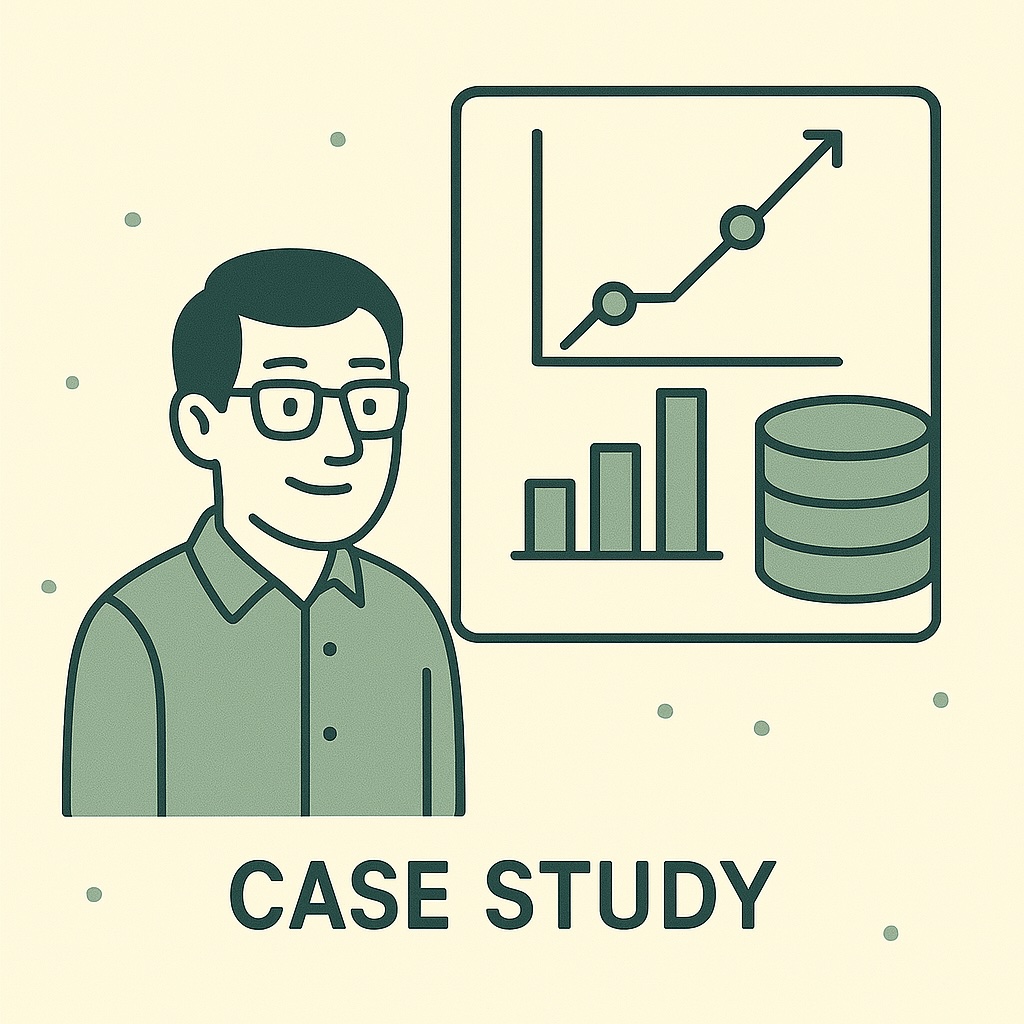
Looking for a Data Scientist?
For a small fee, you can easily post your job vacancies on our platform and reach our large, relevant network of data and analytics specialists. Applicants will respond directly to you, without third-party intervention.
On DataJobs.nl, we connect supply and demand in the data and analytics job market directly—without intermediaries. You will not find job vacancies from recruitment agencies here. Visitors can view all vacancies for free and apply directly without an account.
Explore the options for posting vacancies here. Have questions? Contact us!
Op zoek naar een uitdaging in data & analytics?
Bekijk hier alle actuele kansen! See vacancies- What does a Data Scientist do
- Job Profile of a Data Scientist
- Difference Between Data Scientist and Data Analyst
- Which tools does a data scientist use
- A Day in the Life of a Data Scientist
- What does a Data Scientist earn
- Career Path and Advancement Opportunities for Data Scientists
- Networking and Industry Organizations for Data Scientists
- Impact and societal relevance
- Case Study: The Role of the Data Scientist
- Vacancies for Data Scientists
- Looking for a Data Scientist?


